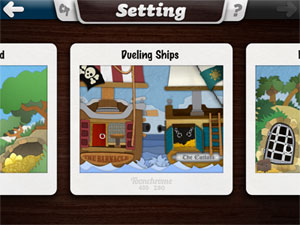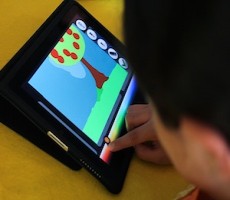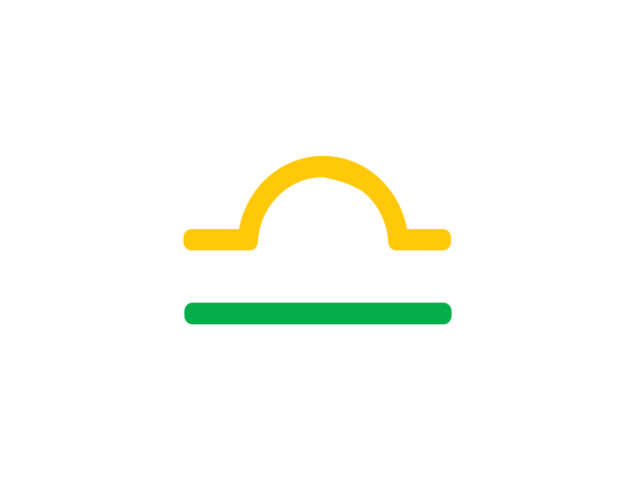 Give a young child a couple of toys or a box of crayons and he or she is likely to play for hours, deeply engrossed in an imaginary world. In both art and dramatic play, children construct settings, create fictional characters, and act out fantastic storylines that would be the envy of many Hollywood scriptwriters. Yet, ask that same child to write out a story in a blank notebook or a word processor and you would be lucky to capture a fraction of the depth and splendor of his or her imagination. Play inspires and scaffolds the creative process from an early age, but there is a persistent gap between the origins of imaginative play (ages 4-5) and kids’ adoption of the formal discipline of creative writing (ages 8+). At Launchpad Toys, we’re using mobile devices like the iPad to bridge this gap between informal and formal learning, to harness the power of play to help children capture and share their ideas with other kids around the world.
Give a young child a couple of toys or a box of crayons and he or she is likely to play for hours, deeply engrossed in an imaginary world. In both art and dramatic play, children construct settings, create fictional characters, and act out fantastic storylines that would be the envy of many Hollywood scriptwriters. Yet, ask that same child to write out a story in a blank notebook or a word processor and you would be lucky to capture a fraction of the depth and splendor of his or her imagination. Play inspires and scaffolds the creative process from an early age, but there is a persistent gap between the origins of imaginative play (ages 4-5) and kids’ adoption of the formal discipline of creative writing (ages 8+). At Launchpad Toys, we’re using mobile devices like the iPad to bridge this gap between informal and formal learning, to harness the power of play to help children capture and share their ideas with other kids around the world.
Why Is Play So Important?
While stuffed animal tea parties and standoffs between cops and robbers might seem rather recreational and luxurious to the average adult, researchers like Maria Montessori and Paulo Freire have shown imaginative play to be critical to a child’s social-emotional and oral language development. From a constructionist perspective, play is a social laboratory where kids learn by trying on, testing out, and adapting new ideas — just as they might costumes. As many parents can attest, it’s not uncommon to see one day’s “real-world” lessons being practiced in the next day’s dress-up session. Imaginative play is also critical to a child’s creative development. In play, kids become producers, writers, inventors, and artists by exercising their divergent thinking and storytelling skills — the building blocks of creative learning. As we described in Learning Across Silos: An Integrated Approach to the Creativity Crisis, imaginative play challenges kids to create their own characters, storylines, and fantasy worlds while thinking outside of the box to design novel and practical (creative) solutions to abstract problems.
Still, despite these rich opportunities for social and creative learning, there is a persistent gap between the playroom and the classroom. Kids learn as much about the world around them from their peers as they do from adults, teachers, or textbooks. Yet, open-ended play is difficult to assess and the scope of knowledge-transfer is inherently limited, which is why we all too often draw a line in the sand between formal and informal learning.
The New Frontier of Digital Play
Can you imagine if kids could not only capture their play as stories, but then share those stories with their peers around the world? What if kids could learn about geography, religion, and culture through the narrative play and stories of other children just like them?
Mobile devices like the iPad have opened the door to new digital play experiences that will realize this possibility and help to bridge the gap between formal and informal learning. Achieving this vision, however, requires that we as educational media designers shift our mindsets away from “games” to “play”. Mitch Resnick, Lego Professor of Learning at the MIT Media Lab’s Lifelong Kindergarten group, says we need to start thinking about computers as paintbrushes — playful and open-ended tools for creative expression.
Why the iPad? Despite their common roots, imaginative play and games are actually quite different. Games are relatively rigid and linear – computer-guided missions that position the user behind layers of abstraction (mouse, joystick) and artificial guidelines (you can move here, but not there). Play, on the other hand, is open-ended and creative – kid-driven explorations that empower them to generate their own rules, relationships, and abilities. In this way, play is inherently oral, kinesthetic, tangible, social, and mobile. Play uses all the senses and goes anywhere, anytime. While there is certainly a great deal of hype around devices like the iPad, this much is certain: large touchscreens, positioning sensors, microphones, and mobile Internet connections empower us as designers to leap over traditional gaming barriers to pioneer a new frontier in digital play.
Bridging the Gap
 At Launchpad Toys, we’re creating digital toys and tools that empower children to create, learn, and share their ideas through play. Our goal is to encourage and exercise kids’ creativity through Constructionist learning tools that enable kids and their parents to share their creative content with friends and family around the world. Our first product, Toontastic, is a creative learning tool for the iPad with which kids can draw and animate their own stories through narrative play. Toontastic scaffolds the storytelling process, introducing ideas like character, setting, narrative arc, and emotion while making cartoon animation as easy as putting on a puppet show.
At Launchpad Toys, we’re creating digital toys and tools that empower children to create, learn, and share their ideas through play. Our goal is to encourage and exercise kids’ creativity through Constructionist learning tools that enable kids and their parents to share their creative content with friends and family around the world. Our first product, Toontastic, is a creative learning tool for the iPad with which kids can draw and animate their own stories through narrative play. Toontastic scaffolds the storytelling process, introducing ideas like character, setting, narrative arc, and emotion while making cartoon animation as easy as putting on a puppet show.
Here are four lessons that we’ve learned about designing for digital play:
• Grow with the child. In the toy industry, the best toys are often termed “Grow with Me Toys” – toys that retain their appeal and fun as the child gets older, but offer different benefits at different ages. LEGOs are a great example of a “Grow with Me Toy” – the play pattern and basic mechanic of snapping bricks together stays consistent from Duplos to Mindstorms, but the play patterns and learning goals change dramatically as the child’s needs and abilities mature. As a result, LEGOs are rarely a “flash in the pan” investment – kids will continue to play with them from age 3 through… well, adulthood (ahem).
Our hope is that Toontastic will grow with our users from age five until, well, their iPad bites the dust. We don’t expect our youngest users to grasp the complexities of narrative arc and scene types, but our aim is to make the animation process and the user interface intuitive enough that young children can work through the software and enjoy the simple process of creating stories. With age and repetition, we hope that those young users will then grow in time to understand the more complex concepts inherent in the software – much like many young LEGO builders move on to create stop-motion animations and program robots.
• Beware the “Digital Tutor.” Encourage parent collaboration. Creating educational software doesn’t require you to bottle a teacher inside your game. Good teachers are dynamic, charismatic, and are really good listeners – computers are not. As educational media designers, we should be creating software tools that encourage conversations and collaborative learning rather than trying to instruct or quiz the child. Parents are looking for opportunities to play and co-create with their kids. Support them with supplementary materials that will help them to teach their children rather than relying on the software to be a tutor.
With Toontastic, our goal is not to “teach” the children directly, but to introduce concepts and then provide a laboratory in which to experiment with those ideas. In turn, our hope is that parents will not only play along with their children, but provide supplemental instruction. To aid parents, we provide detailed help screens on every page as well as a Parent/Teacher guide full of prompts, story starters, and questions for the child.
• Spark the imagination. Just as dolls, puppets, action figures, and costumes are “story starters” for imaginative play, it’s important to provide creative catalysts that will start a child down a path without providing too many guidelines and restrictions. Blank canvases are essential, but many kids will need a creative nudge or two along the way.
In Toontastic, we offer customizable characters and pre-drawn settings in addition to open-ended drawing tools. We’ve found that kids often gravitate towards ready-made characters their first few times playing, but then quickly graduate to designing their own characters and settings from scratch.
• Reward iteration. Learning isn’t a one-stop shop. Kids evolve their ideas and knowledge over time, so use small rewards and social feedback forums to encourage repeat play.
Our ultimate goal for Toontastic is to create what we’re calling “A Global Storytelling Network for Kids, by Kids” – a place where kids can upload their stories, receive constructive feedback from their peers, and then adapt their stories accordingly. When a child completes a cartoon, he or she nominates that cartoon for a “badge” (Think “Boy Scouts meets Academy Awards”). Through our ToonTube website, viewers can vote to give the cartoon a “Thumbs Up” and (eventually) provide written feedback. Once the child earns enough votes, the badge is awarded along with a new character that can be used to create yet another cartoon, thereby creating what we hope to be a virtuous cycle of story creation.
If you’re interested in reading more on digital play and creative learning, we invite you to join the discussion on Launchpad Toys’ blog. Information on Toontastic is available on the company’s website and in the iTunes App Store.
Andy Russell is an educational media producer and a co-founder of Launchpad Toys, finalists for the Cooney Center’s 2010 Mobile Learning Grant Prize. Inspired by the movie BIG and a lifelong obsession with small, brightly colored plastic bricks, Andy designs digital toys and tools that empower kids to create, learn, and share their ideas through play.



